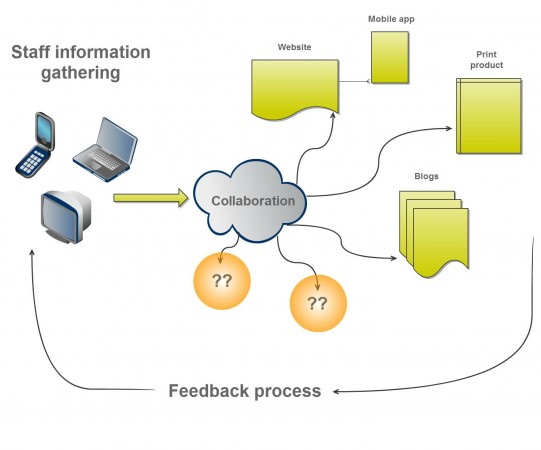Your news team is working on a story that’s already looking like next week’s top headline. Your social media lead is broadcasting football updates on Twitter. You have half a dozen reporters writing blog pieces on the upcoming union elections and your star designer is deciding whether to go for an infographic or cartoon to clarify the latest budget cuts. At every step you should be thinking ‘where is our audience and what do they want?’. For this to carry any consequence, you need scope to be creative.
If this sounds familiar, you’ve most likely worked for a media organization (woohoo!). You’ve probably also invested a good deal of time discussing how best to engage your audiences: the subscribers to your monthly newsletter, the students on-campus, those weekly traffic numbers to your website. Thanks to ever-improving analytics tools or just a good dose of common sense, it doesn’t have to take long to find out what works for you and what doesn’t – but you should be prepared to be surprised. While you and your colleagues may feel you have a proven, effective product-line in place, there’s always more you can be doing to access your audience. Your advertising team will back this up.
The vast majority of publishers typically have a ‘primary’ product that they promote: usually one of their print product or main website. Then there’s the secondary wave: Twitter, Facebook and perhaps Pinterest promotion, all of which is an essential (and growing) part of both driving traffic and cultivating an audience that expects to return to your content offerings at some point in the future.
It’s important to remember that the platforms any publisher uses to display content often have audience communities of their own that can be defined by a predictable range of desires: from appreciating a good-looking theme (e.g. WordPress), to being able to re-post a story easily (Tumblr); from enjoying a socially-curated experience (Facebook) to identifying with their vicinity (print). For a publisher, the idea that the appeal of their content consistently or exclusively aligns with the demographics associated with any single publishing platform might be convenient, but it’s almost certainly costing them the opportunity to grow their audience. This is a dangerous limitation that’s ripe for removal, if we improve publishers’ ability to experiment with new publishing platforms on-the-fly. If audiences are able to move from one platform to another so quickly, why not publishers?
We strongly believe that publishes should keep experimenting with the platforms they publish to and that this exploration should never come at the cost of the quality or sustainability of their content itself. We’re going to see continuous development of disruptive platforms and brand new iterations of existing ones, so the situation that most publishers are dealing with looks something like this:
We’re going to be expanding our integrations with publishing platforms beyond our existing connection with WordPress (which happens via our plugin). If you’re interested in experimenting with a particular audience interface (e.g. Tumblr, Facebook, Drupal, etc.) please get in touch. We’d love to help you find out where your audience really is.